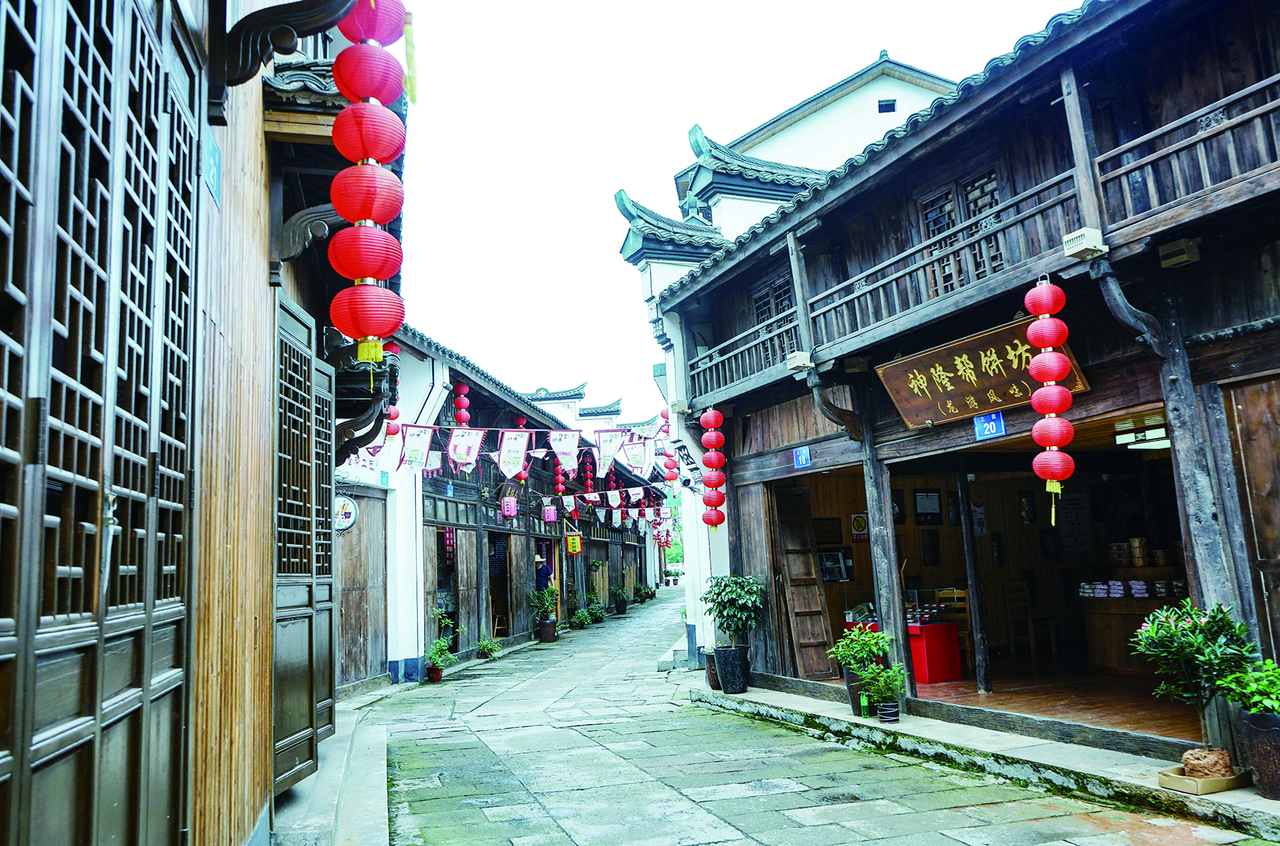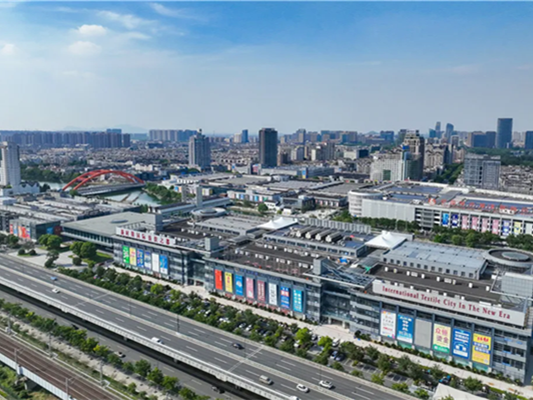
The scenery of Xikou township
Xikou town, once known as Baishi county, has a history of over a thousand years. Because of its location, convenient for both water and land transportation, it was an important town of commerce and trade in ancient times, and has eventually become a cultural and business hub today.
Renowned as “the ancient town of bamboo and the hometown of King Yan”, it has been listed as one of the central towns for comprehensive reform in Zhejiang province, one of the top 100 towns for afforestation achievement nationwide, one of the 200 key towns in Zhejiang province, one of the ten national key towns in Quzhou city, and an indispensable part of Quzhou’s “beautiful economic belt”.
The profound historical charm is the biggest feature of Xikou. Its historical and cultural landmarks, King Yan’s qualities of “benevolence and righteousness”, and its camaraderie and hard-working spirit have shaped the soul of the ancient town.
The ancient town is built along the Lingshan River and has a unique pattern of spatial form. More than 30 buildings from the Ming (1368-1644) and Qing (1616-1911) dynasties are distributed on both sides of the streets, including stores, workshops and houses. The overall layout, scale and color of the buildings have a distinct flavor of the Jiangnan area (south of the Yangtze River), which have integrated both the Huizhou style and Longyou’s local architectural features. The ancient stores and houses are finely carved and made of exquisite materials, where traditional brick and wood carvings are very commonly seen. Rich in content and unique in style, they are like a natural architectural museum.
Nowadays, the ancient town has put on a new look. The transformation and upgrading of historical and cultural districts have been accelerated, so have the development and construction of new districts and the revitalization of rural areas. The comprehensive environmental improvement project has been fully completed, and the infrastructure has been significantly improved, cleaned, polished and kept in order. Furthermore, the construction of the historical and cultural core area has been basically completed, and the first rural future community in Zhejiang has been officially put into use.
Based on its local cultural resources, Xikou is also heading for modernization. While developing intangible cultural heritage such as Fangshan tea, Duantoulong (dragon with a broken neck) and King Yan’s temple, the Xikou government has also been actively planning some high-tech cultural projects and vigorously carrying out a wide range of local culture themed activities to enhance its reputation as a town of cultural tourism. The government has also intensified their efforts to improve people’s livelihood and ecological environment, aiming at building Xikou into a modern town in western Zhejiang.
Relying on the merchants’ culture and King Yan’s “benevolence and righteousness” culture, the government has taken “two districts and one community” as the core (Xikou and Lingshan historical and cultural districts and Xikou rural future community) to fully tap Xikou’s cultural resources by developing a business landscape including time-honored shops, cozy B&Bs and local restaurants.
To fully leverage its regional advantages, the government has focused on promoting the linkage development of “one town with three townships” (Xikou township with Muchen, Miaoxia and Dajie townships), and the development of high-quality agriculture, bamboo and wood processing, leisure and healthcare, among other industries.
By 2025, Xikou township will achieve an all-round revitalization in terms of cultural inheritance, people’s well-being and environment; by 2035, the living conditions, the infrastructure, the supporting service facilities and the style of the ancient town will be further improved, and its soft power and influence will be significantly enhanced.
The protection and development of historical relics will be significantly strengthened. Xikou’s historic and cultural streets and areas have been effectively preserved and developed, the former residences of celebrities, scenic spots, ancient bridges and other buildings have been further protected, repaired and rebuilt, the style of ancient villages has been further transformed and improved, and new breakthroughs have been made in local government’s application of national, provincial and district-level units for cultural protection.

The old street in Xikou township, Longyou county
Cultural inheritance and promotion will also be significantly enhanced. The merchants’ culture of Xikou will become a new cultural “golden name card” of Quzhou, and a cultural “meeting room“ of the ancient town, an exhibition hall for intangible cultural heritage and King Yan’s cultural park will be established. Ecological enhancement projects will be implemented, effectively improving the natural landscape, the water quality and the overall style of the ancient town. By 2025, the facade renovation along the river and the upgrading of sewage treatment terminal will be completed. Specifically, the government will focus on cultural tourism, strive to improve the livelihood for residents in old districts, adopt a scientific way to repair, restore and reconstruct historical relics, and advance the traceability research of excellent traditional culture. It is critical to keep a good balance between protection and inheritance, in order to strengthen the inheritance of intangible cultural heritage.
In addition, the government will carry out special projects to renovate Xikou in terms of architecture, cultural landscape and historical image, to build Xikou into a smart town, and to improve its industrial structure with a focus on tourism. Restoration of ancient districts will be implemented based on historical records of the architectural style of the early Tang dynasty (618-907), the cultural mascot of the Baishi county will be designed, and the tourism signage system will be upgraded. Smart map system for tourists will also be built by using modern information technologies such as 5G and big data to realize digital navigation and multi-dimensional display. The application scenarios include search for tourist attractions in and around Xikou, on-the-cloud display of tourist attractions, panoramic travel experience, electronic travel guide, traffic route search and recommendation, search for service facilities, and search for information on travel safety and rescue. Meanwhile, apart from historical and cultural districts for tourists, Longyou cuisine and delicacies will also be vigorously developed at the local catering industry; long-table banquets, night markets and other cultural activities will be organized. Therefore, young entrepreneurs are encouraged to come to Xikou, where they are able to start their own businesses and shape the old street into a modern one with an atmosphere of leisure, entertainment and culture.
Editor:Huang Yan





